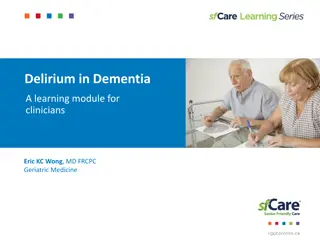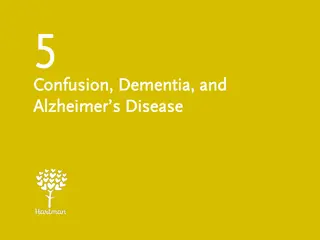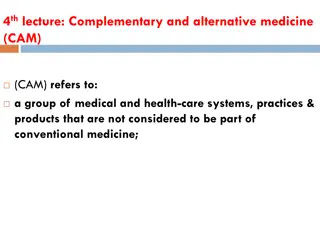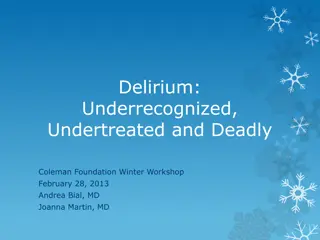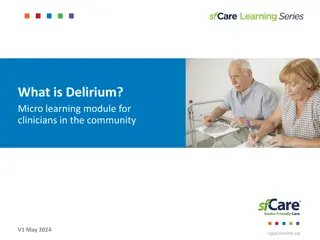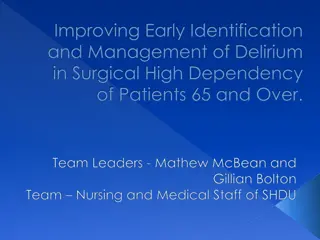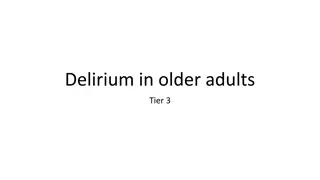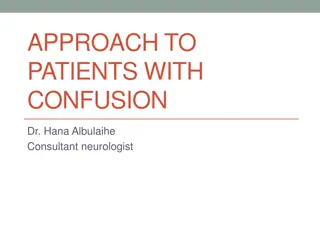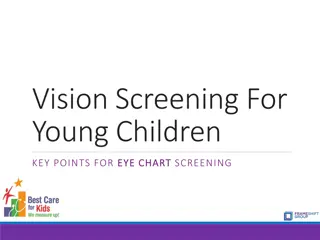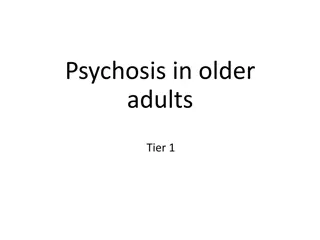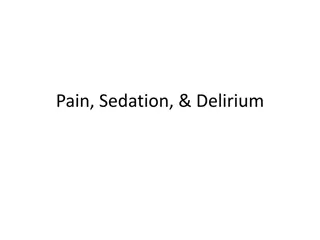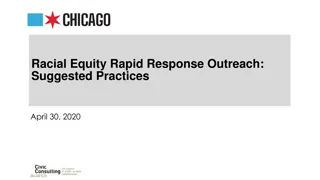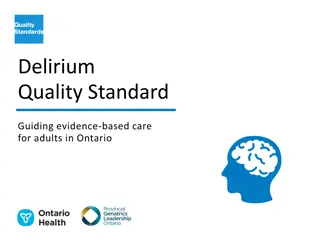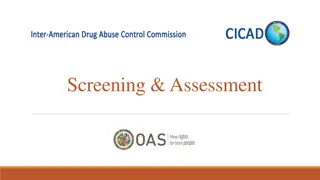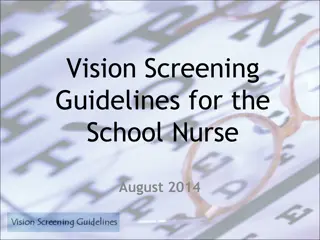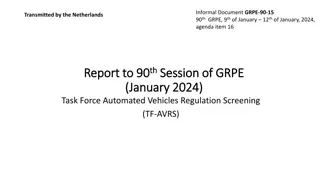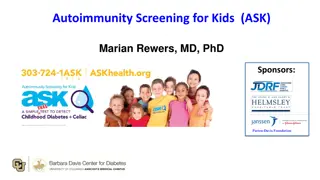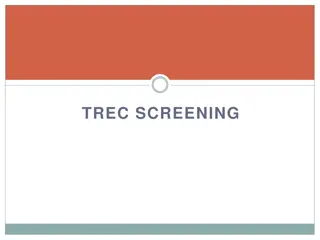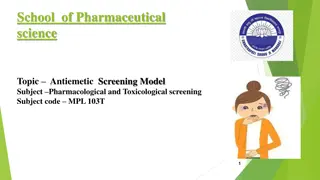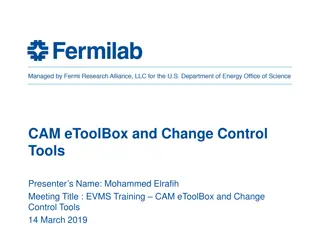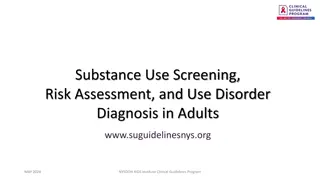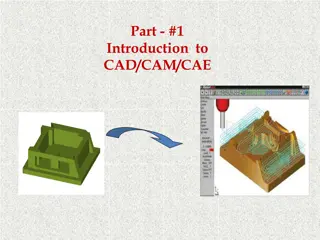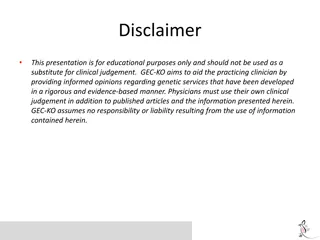Comprehensive Overview of Confusion Assessment Method (CAM) for Delirium Screening
Confusion Assessment Method (CAM) is a crucial tool used for screening delirium in patients, particularly those aged 65 and older or presenting with acute confusion. CAM assesses for clinical features like acute onset, fluctuating course, inattention, disorganized thinking, and altered level of consciousness. By identifying these symptoms, healthcare providers can initiate timely interventions to address delirium efficiently.
Download Presentation

Please find below an Image/Link to download the presentation.
The content on the website is provided AS IS for your information and personal use only. It may not be sold, licensed, or shared on other websites without obtaining consent from the author. Download presentation by click this link. If you encounter any issues during the download, it is possible that the publisher has removed the file from their server.
E N D
Presentation Transcript
Confusion Assessment Method (CAM) Purpose: Provide initial and ongoing screening of patients for identification of signs and symptoms of delirium. Initiate interventions based on CAM screening and symptoms presented.
When is CAM tool used? All patients age 65 and older Q shift Any patient with onset of acute confusion.
CAM Screening Components: CAM screens for the presence of four clinical features of delirium (does not identify severity) Acute onset and Fluctuating Course Inattention Disorganized Thinking Altered Level of Consciousness
Acute Onset and Fluctuating Course Is there evidence of an acute change in mental status? Worsening memory, language impairments, disorientation, perceptual disturbances usually over hours to days? May require information from family member, caretaker, or nurse who is familiar with patient s baseline. Did the abnormal behavior come and go or increase or decrease in severity?
Inattention Did patient have difficulty focusing attention, for example being easily distractible, or having difficulty keeping track of what was being said? Symptoms of Inattention: Must frequently repeat questions because attention wanders- not due to hearing loss. Unable to gain pt attention or make prolonged eye contact. Pt may look at you for a moment and stare off into space; does not respond to your questions.
Disorganized Thinking Was the patient s thinking disorganized or incoherent, such as rambling or irrelevant conversations, unclear or illogical flow of ideas, or unpredictable switching from subject to subject? Example: You ask patient if they are having any pain and the patient states that he needs to go to the mailbox to pick up his mail.
Altered Level of Consciousness: Alert (normal) Vigilant (hyperalert) Lethargic (drowsy, easily aroused) Stupor (difficult to arouse) Coma (unarousable)
A positive screen for Delirium includes: Scoring: 1 + 2 + 3 plus either 4 and/or 5 1. Acute Onset plus 2. Fluctuating Course plus 3. Inattention plus Either 4. Disorganizing Thinking and/or 5. Altered Level of consciousness
Interventions: Interventions for patients who have delirium are very simple, basic, geriatric nursing practices. May be used proactively for any patients who are at risk for becoming confused.
Sleep Enhancement -adhere to schedule -no wake at night -avoid day naps -reduce noise -avoid sedatives -Warm milk -no caffeine -relaxing music -message hand/foot -essentials oils CAM Interventions: Activity: -Chair for meals -Dangle legs -Ambulate 3x day -ROM 2X/Day -D/C tethers, -Avoid restraints -Tasks
CAM Interventions: Cognitive impairment/disorientation: Keep day/night orientation (window shades open) Clock/calendar in room Reorient often to person/place/time Therapeutic activities/communication Facilitate visits from friends/family Consistent staff members Avoid transferring rooms/units
CAM Interventions: Visual and Hearing: - Glasses worn or other visual aid - Hearing aid or pocket talker - Specialty phone
PATIENT AND FAMILY EDUCATION DOCUMENT Document Found InfoNet: Krames on Demand: Custom Documents Delirium Patient and Family Education
Questions, contact: Nora McPherson, RN, GCNS-BC Jill Tusing MS, RN-BC


